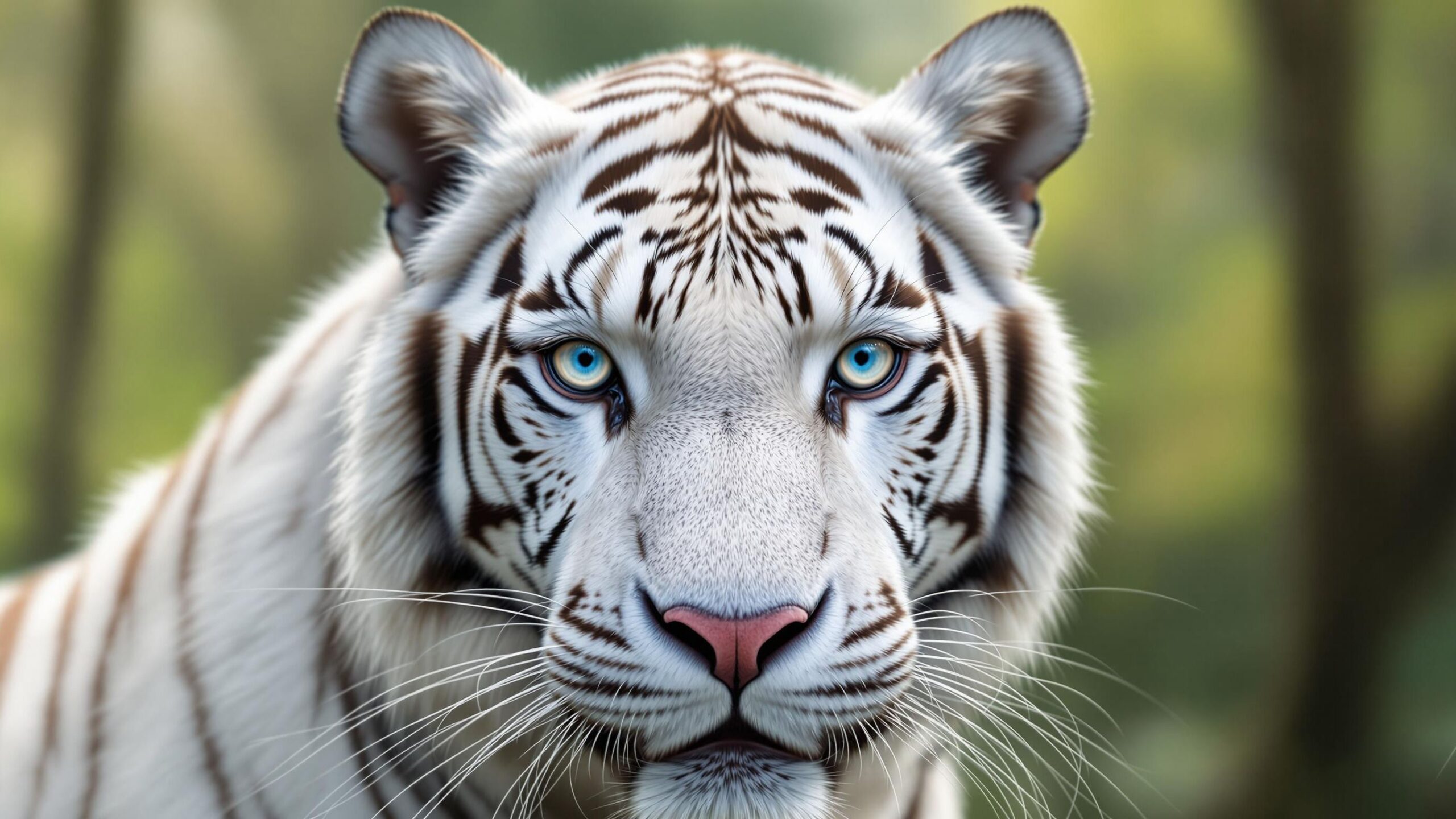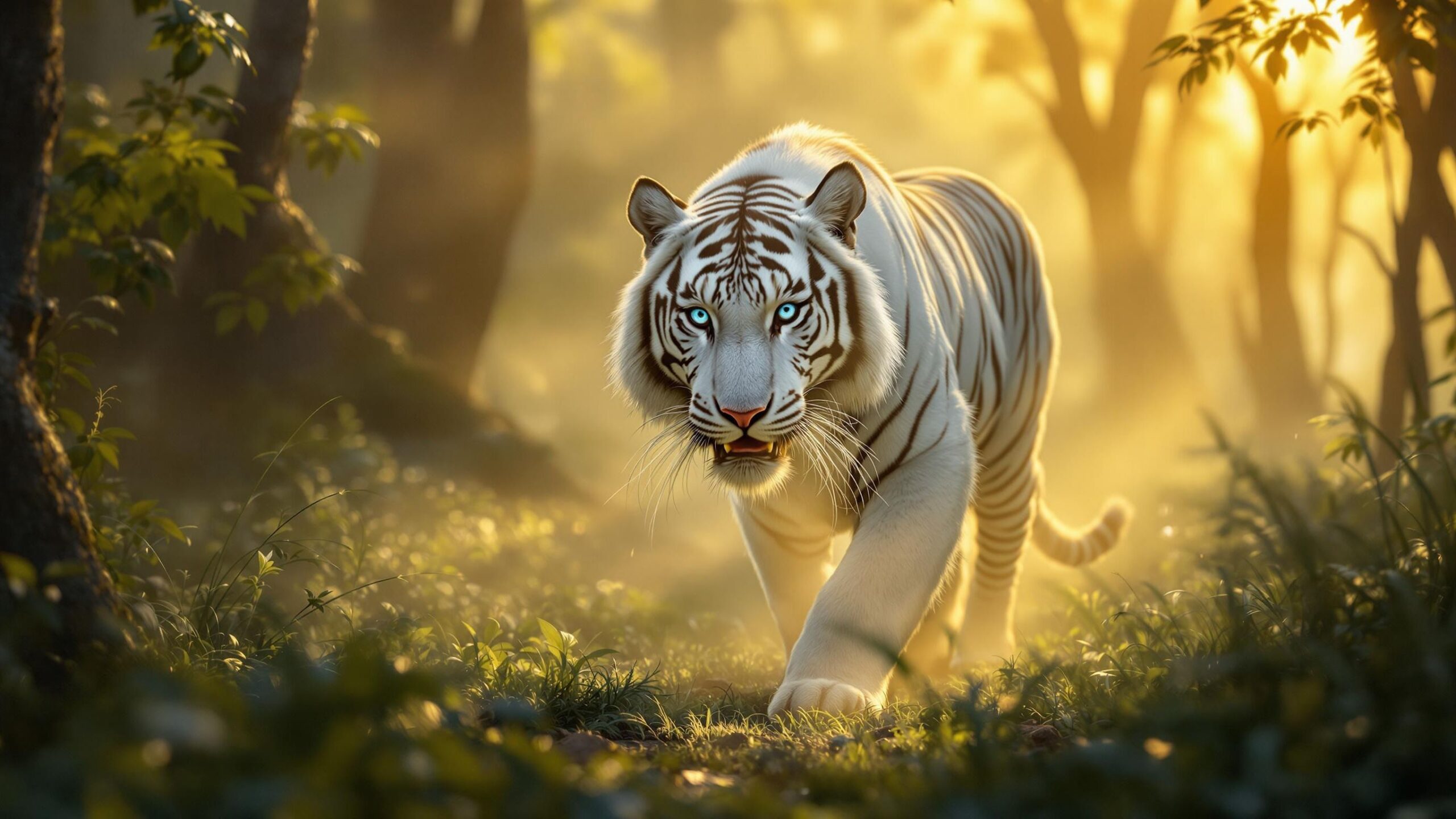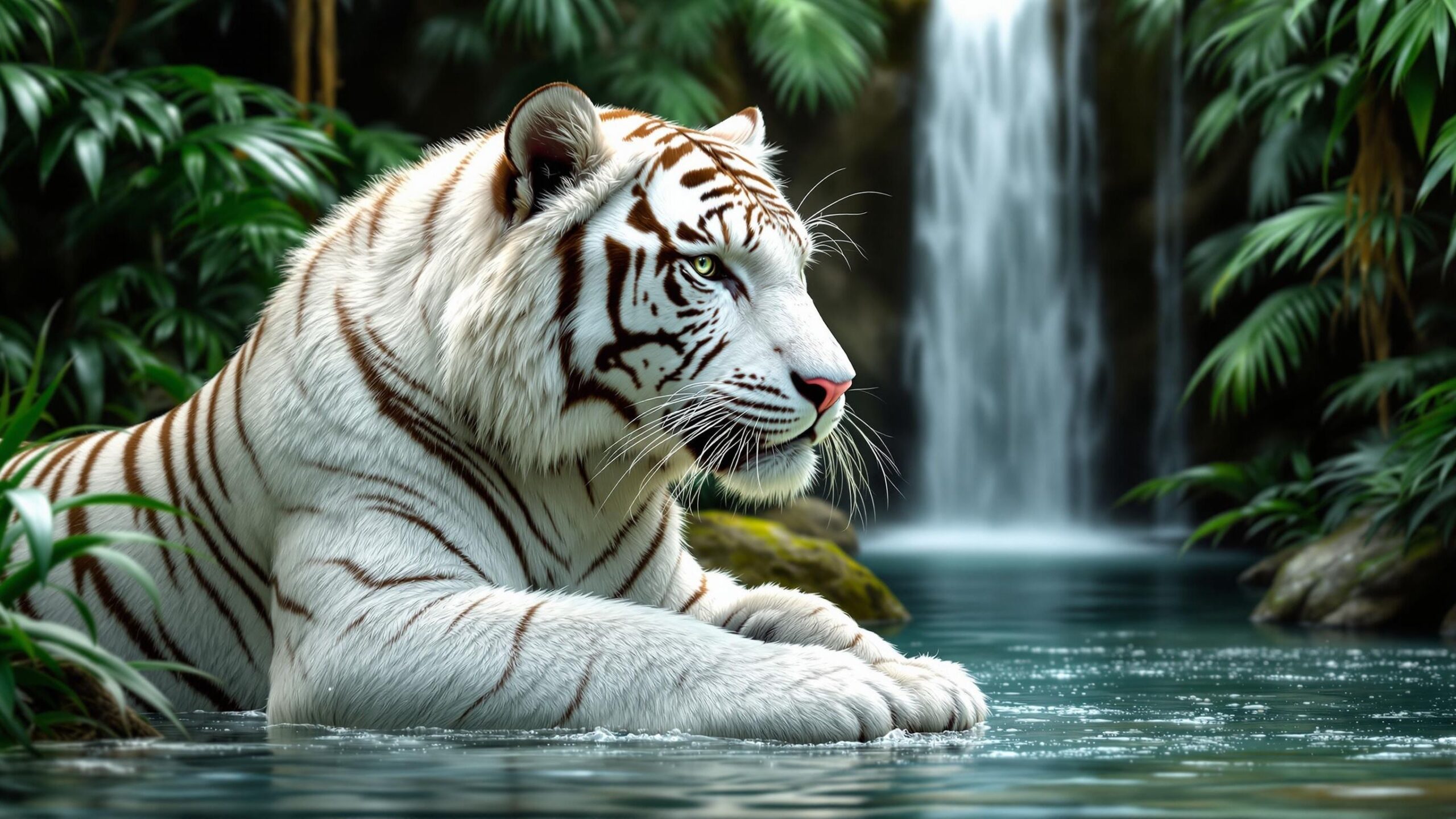White Tiger: The Ghost of the Jungle
In the lush landscapes of India, where ancient temples rise from forest canopies and rivers wind through tiger country, a creature of legend still prowls. The white tiger (Panthera tigris tigris) is not a separate species or subspecies but a rare and captivating genetic variant of the Bengal tiger. With its snowy coat, piercing blue eyes, and powerful build, the white tiger is a vision out of folklore—part myth, part marvel.
While some view the white tiger as a symbol of power and purity, others see it as a living example of genetic curiosity. Its rarity has made it the focus of fascination in zoos, art, and culture across the world. But behind the mesmerizing beauty of this tiger lies a story of science, survival, and sometimes controversy. This article explores the natural wonder that is the white tiger, delving into its origins, biology, lifestyle, and role in modern conservation efforts.
What Is a White Tiger? Understanding Its Origins
The white tiger is a genetic anomaly—a Bengal tiger born with a condition known as leucism, which reduces the pigmentation in the fur but not in the eyes. Unlike albinos, white tigers retain their dark stripes and bright blue or greenish eyes, giving them their signature, ghostly appearance.
White tigers are not a different species or subspecies. They are Panthera tigris tigris, the same as standard orange Bengal tigers. The coloration is caused by a recessive allele that must be inherited from both parents. In the wild, this mutation is incredibly rare. The odds of two tigers carrying the white gene meeting and mating are extremely low, which is why documented wild white tigers are exceedingly uncommon.
Historically, white tigers were reported in the wild jungles of India, primarily in the region of Rewa in Madhya Pradesh. The last known wild-caught white tiger was captured in 1951 by Maharaja Martand Singh. Named Mohan, this tiger became the founder of nearly all white tigers in captivity today. From him descended generations of white tigers bred in zoos and sanctuaries around the globe.
Built for Power: Physical Characteristics
White tigers are physically identical to their orange-coated Bengal relatives in size and structure, with just one dazzling difference—their fur. Their ivory-white coats are marked with either chocolate brown or charcoal black stripes, and their undersides, cheeks, and inner limbs are typically a softer, snowy white. Their pink noses and bright blue eyes further distinguish them, creating a look that seems almost otherworldly.
In terms of size, white tigers are typically large and muscular. Males can weigh between 420 and 570 pounds (190 to 260 kilograms), and females between 300 and 370 pounds (140 to 170 kilograms). Their body length can reach up to 10 feet (3 meters), including a long, thick tail. Interestingly, many white tigers bred in captivity are slightly larger than their wild counterparts, a trait attributed to selective breeding and abundant nutrition. Though breathtaking in appearance, white tigers suffer from some misconceptions. Contrary to popular belief, their coloration does not make them weaker or stronger than standard tigers. However, the reduced camouflage can be a disadvantage in the wild, making hunting more challenging and survival more difficult.
Where They Live: Habitat and Distribution
Since white tigers are Bengal tigers, their natural habitat is the same as that of their orange counterparts. Bengal tigers inhabit the Indian subcontinent, living in a variety of landscapes ranging from tropical forests and grasslands to mangroves and wetlands.
In the wild, white tigers once roamed parts of central and northeastern India, with the highest number of sightings reported from Rewa, Bihar, and Assam. However, due to their rarity and the pressures of poaching and habitat loss, no confirmed sightings of wild white tigers have occurred in decades. Today, white tigers are found almost exclusively in captivity—zoos, wildlife parks, and breeding centers—in India, the United States, and other countries. While some are housed in conservation-focused reserves, many are part of entertainment or tourism-driven attractions, which has sparked debate over their purpose and welfare.

How They Live: Behavior and Lifestyle
White tigers, like all Bengal tigers, are solitary animals. Each tiger claims a territory and defends it from others of the same sex. Males have larger territories that can overlap with those of several females, especially in rich habitats where prey is abundant. Tigers mark their territory with scent, scratches on trees, and vocalizations to ward off intruders.
They are mostly nocturnal, relying on cover of darkness to stalk prey. Their hunting strategy is based on stealth rather than speed. They will quietly approach their target and leap at close range, delivering a powerful bite to the neck or throat. Their primary prey includes deer species such as chital and sambar, wild boar, and sometimes livestock in areas near human settlements. Despite their fearsome reputation, tigers avoid unnecessary confrontations. They are quiet by nature, preferring to travel and hunt alone unless they are raising cubs or seeking a mate. White tigers, when born in the wild, would follow these same instincts. However, because most white tigers today are raised in captivity, their behaviors may differ—often being more habituated to humans and limited in their natural hunting and roaming instincts.
The Science of White: Genetics and Controversy
The gene responsible for the white coloration is recessive, meaning both parents must carry it for the trait to be expressed in their offspring. In the wild, this is highly unlikely due to the scattered distribution of the gene. In captivity, however, white tigers are often inbred to preserve or enhance the white coat, especially since they are in high demand for zoos and exotic exhibits.
This practice has led to considerable controversy. Inbreeding can increase the risk of genetic defects, including cleft palates, scoliosis (curved spine), crossed eyes, and weakened immune systems. Critics argue that breeding white tigers purely for aesthetic appeal is unethical and prioritizes spectacle over species preservation. Many conservation organizations, including the World Wildlife Fund (WWF) and the Association of Zoos and Aquariums (AZA), discourage the breeding of white tigers except under carefully controlled conditions that prioritize animal health and genetic diversity.
Captive Lives: White Tigers in Zoos and Culture
Despite the controversy, white tigers remain popular attractions in zoos and wildlife parks. Their rarity and beauty captivate audiences and can serve as powerful ambassadors for wildlife education—when presented ethically. Some institutions use white tigers to teach visitors about genetics, conservation, and the broader challenges facing wild tigers.
In popular culture, white tigers have taken on symbolic status. They have been featured in movies, fantasy novels, artwork, and even national branding. Perhaps one of the most iconic uses of the white tiger was by the Las Vegas entertainers Siegfried & Roy, who performed with white tigers for decades, further cementing the animal’s association with mystique and wonder. In India, the white tiger has also found a place in modern literature and film. Aravind Adiga’s Booker Prize–winning novel The White Tiger uses the animal as a metaphor for rebellion and transformation, highlighting the tiger’s enduring metaphorical power.
Myth, Symbolism, and Mystery
The allure of the white tiger transcends biology. In various cultures, white animals have long been seen as spiritual omens, signs of divine presence, or manifestations of the rare and extraordinary. In Chinese mythology, the white tiger is one of the Four Symbols, representing the cardinal direction west and the element metal. It is a guardian spirit, a symbol of virtue and righteousness.
In India, the tiger itself is deeply embedded in cultural identity, symbolizing strength, courage, and divine protection. The goddess Durga rides a tiger into battle, representing the triumph of good over evil. While traditional lore does not focus specifically on white tigers, their rarity only enhances their mystique. In modern times, the white tiger continues to serve as a symbol of rarity, resilience, and both the majesty and fragility of the natural world.
Conservation Perspectives: Beauty Versus Biodiversity
While the white tiger may be captivating, its existence raises complex questions about conservation priorities. White tigers in captivity are not necessarily helping save tigers in the wild. Most are not part of coordinated breeding programs designed to reintroduce animals to their natural habitats, and their limited genetic diversity makes them unsuitable for such efforts.
Instead, conservationists stress the importance of protecting natural tiger habitats, reducing human-wildlife conflict, and preserving genetic diversity across all tiger populations. The Bengal tiger itself, despite being the most numerous subspecies, is still listed as Endangered. Fewer than 3,000 Bengal tigers are estimated to remain in the wild, facing threats from poaching, deforestation, and habitat fragmentation. Nevertheless, white tigers can play an indirect role in conservation if they help raise awareness and funding for broader tiger protection efforts. When their stories are used responsibly—to educate the public, highlight the impact of human choices on wildlife, and inspire stewardship—they can contribute to the larger cause of saving wild tigers.

The White Tiger in the Wild: A Disappearing Dream
Today, the chances of encountering a white tiger in the wild are almost zero. With so few Bengal tigers left in nature, and an even smaller subset carrying the necessary recessive gene, the odds are vanishingly small. The white tiger is, in many ways, a living ghost of the forest—more common in memory, myth, and managed enclosures than in nature.
But the idea that something so rare once lived in the wild continues to inspire wonder. It reminds us of what the natural world is capable of producing when left untouched: beauty without design, mystery without manipulation, and life that needs no justification beyond its own existence.
Final Thoughts: Why the White Tiger Matters
The white tiger is a paradox—natural yet unnatural, admired yet misunderstood, conserved yet controversial. It is not a solution to tiger conservation, but it is a spark. A spark that can ignite curiosity, passion, and maybe even action. It is a reminder that nature is full of surprises, and that not all value lies in numbers or practical outcomes.
In a time when biodiversity is shrinking, the white tiger symbolizes something greater than itself. It represents the unexpected miracles of nature, the fragility of genetic diversity, and the need to balance awe with responsibility. Whether it prowls a jungle in legend or lounges behind glass in a modern zoo, the white tiger continues to captivate the human imagination. To see a white tiger is to glimpse what nature can create when left to chance and time. To protect tigers of all stripes is to ensure that future generations can still be enchanted by these magnificent creatures—white, orange, and everything in between.

